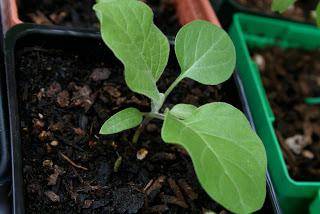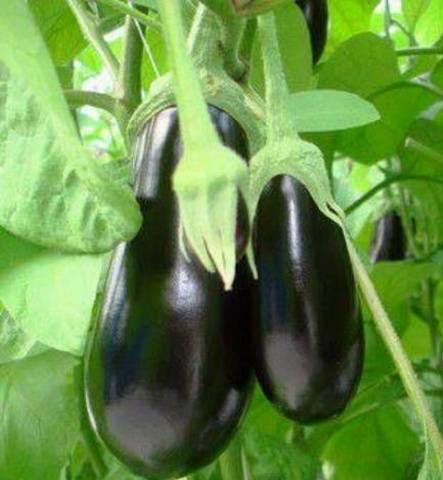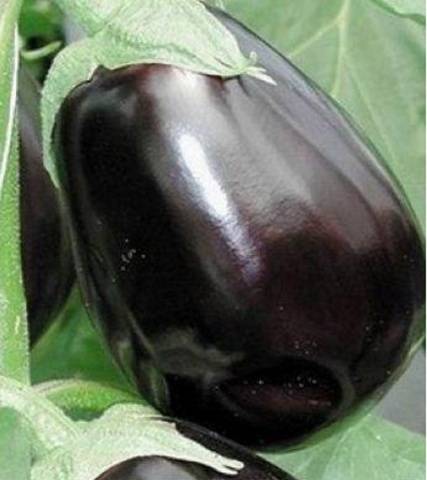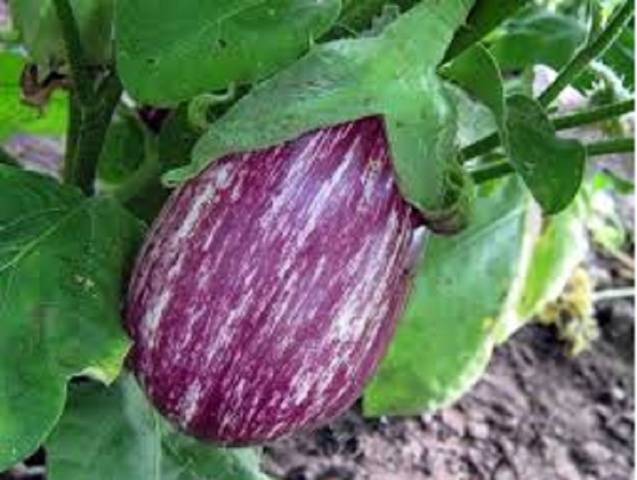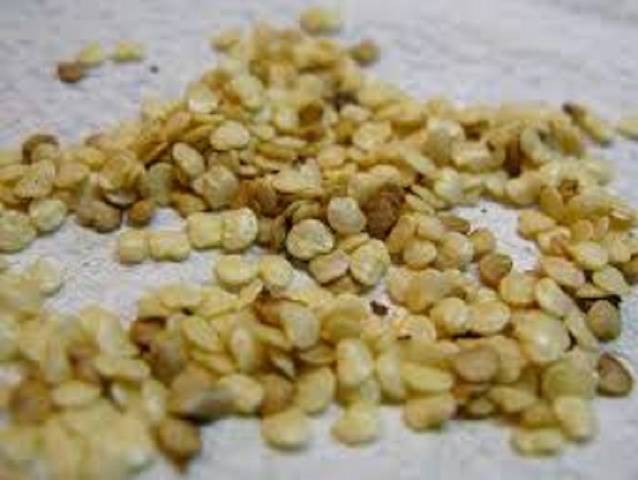Content
The list of crops grown by Siberian gardeners is constantly expanding thanks to breeders. Now you can plant on the site and eggplant... Rather, not only plant, but also harvest a decent harvest. At the same time, the choice of a variety for sowing will not cause much difficulty. For a region with characteristic climatic conditions, you will have to pay attention to some parameters:
- Ripening period... The short summer dictates its own rules and the choice will have to be made among early hybrids or eggplant varieties. They will have time to ripen and provide summer residents with a good harvest.
- Variety selection... Preference should be given to varieties with high resistance to temperature extremes and its low values. It is imperative to take into account all the characteristics of the variety according to the description.
- Powerful eggplant seedlings... One of the main ingredients for success.
- Warming up the soil... To ensure this parameter, many grow eggplants in high ridges, under double quality shelter.
In addition, there are nuances of growing eggplant in Siberia, which summer residents willingly share with each other. Eggplant is considered a very healthy vegetable that contains tons of nutrients, is low in calories and has a great fruit flavor.
When to sow eggplants for seedlings
It is very easy to solve this question. The sowing time is determined by the time of planting seedlings in open ground or for permanent residence.
Many gardeners, to play it safe, grow eggplants in Siberia only in greenhouses. And the daring lovers of experiments do an excellent job with this task in the open field. It depends not only on experience, the choice of seeds and care, but on the well-chosen time for sowing seeds for seedlings. When to sow eggplants for seedlings this year? How to calculate this period correctly?
The rest of the calculation depends on the region in which the eggplant will be grown. If you plant a zoned eggplant variety, then without a greenhouse they feel much better than peppers. This is due to the fact that they are more cold-resistant and like active air movement.
But for planting seedlings in the ground, the soil must warm up to + 20º, which happens, on average, on June 10th.
Of course, the date cannot be very accurate, as weather conditions are very variable. Taking into account all the errors, we determine the time for sowing eggplant seeds for seedlings - the second half of February or the first decade of March.
Choosing a suitable variety of eggplant
As mentioned above, you need to sow seeds of early hybrids or varieties of eggplant for seedlings. This will save from the inconsistency of the maturation of the culture and the climatic conditions of Siberia. Experienced gardeners recommend opting for eggplant in Siberia:
"Purple Miracle F1"
Early, with a high yield and stable characteristics. Suitable for growing in greenhouses and outdoors. The bush is compact, which is important for small areas and up to 90 cm high.It is appreciated by gardeners for the absence of thorns on the calyx, resistance to diseases and against pests. Housewives love for excellent taste in any cooking method.
Nutcracker F1
Super early, matures in 45 days. It is appreciated for its unpretentiousness to growing conditions, constant fruit formation, adaptability to long-term transportation. Grows well in the open air, in a greenhouse. Medium-sized and spreading plant. It is necessary to consider when choosing a landing pattern.
"Robin the Hood"
A low-growing, spreading plant with a bush height of up to 1 meter. The planting density of eggplant is recommended - no more than 5 plants per square meter. Weakly prickly pear-shaped fruits have excellent taste. The advantage of the variety is its high adaptive capacity, which leads to the formation of fruits in any conditions. Can be grown with equal success in any soil. Suitable for pickling and pickling.
"Matrosik"
A mid-season eggplant variety, but manages to give a good harvest of the original fruit. Bush up to 75 cm high, semi-spreading. The fruits are striped, beautiful and tasty. Eggplant "Matrosik" is resistant to diseases, which makes it possible to grow it in Siberia.
"Diamond"
A very well-known medium grade eggplant with good parameters. Zoned for almost all regions. It also grows successfully in Siberia. Compact bush, stable yield, unpretentiousness and excellent fruit taste. What else is needed for a gardener?
Among the suitable varieties for Siberia, it is worth noting the early "Epic" and "Early ripening 148", the middle "Black handsome".
The variety has been selected, we proceed to the next important stage - sowing.
How to properly prepare eggplant seeds for seedlings
We highlight this point in a separate chapter because this is one of the important stages of growing strong seedlings. Sowing the right seeds is a requirement for all crops. Eggplant is no exception. Before buying seeds for seedlings, carefully read the information about the variety.
- The letter F1 indicates belonging to the group of first generation hybrids. Such eggplants are resistant to diseases, tolerate climatic fluctuations well, and give a stable harvest. Lack of hybrids - seeds retain their characteristics only in the first generation. Next year you will have to buy new ones to get the same result.
- The package must contain the details and contacts of the manufacturer.
- Be sure to check the deadline for implementation. Recommendations on the timing of sowing and planting of the variety, the main nuances of agricultural technology can also be indicated there.
After purchasing, do not rush to sow immediately. First, we check the seeds for germination. With elite hybrid eggplants, you can skip this point. But personally assembled or bought on the market, it does not interfere with checking.
For this they need soak, But not all. Take a few pieces from a batch or pack, soak for 12 hours. Then place in a damp cloth (gauze) and place in a warm place. If half of the seeds are good, then your planting material is of good quality.
In stores, eggplant seeds are kept in a dry room and at a low temperature. Therefore, they will have to be heated either dry or hydrothermally. The first option is carried out for 2 days at a temperature of + 40º. Hydrothermal - in warm water for 15 minutes, immersing the seeds. Some gardeners use a thermos for these purposes. This significantly reduces the time of the procedure. Water temperature + 50º, diving time - 5 minutes.
Next stage - etching... We place the seeds in a solution of potassium permanganate of a not very saturated color and stand for half an hour. An alternative way is to place it in a solution of hydrogen peroxide for 10 minutes (3 ml of peroxide per 100 g of warm water). This procedure protects the eggplant seeds from pathogens.
And lastly they spend hardening... The seeds are kept in a damp cloth for a week. During the day they are in the room, and at night they are placed in the refrigerator.
You should not be afraid of so many preparatory procedures. They are quite simple, but good for eggplant. When everything is done, you can start sowing.
We sow eggplant correctly
In order for further actions to lead to a good result, you will have to take care of high-quality soil and containers for eggplant seedlings.
The soil can be prepared in the following composition:
- sod land - 1 part;
- peat - 2 parts;
- sawdust, brewed with boiling water - 0.5 parts,
The second option is ready-made purchased land for seedlings, black soil and sand in equal amounts. Add fertilizer well. For 10 liters of finished soil, add:
- superphosphate - 20 g;
- ash - 30 g;
- potassium sulfate - 5 g;
- urea - 5 g.
Before sowing eggplant seeds for seedlings, heat the soil or pour boiling water with potassium permanganate.
Requirements for the landing container:
- There should be a hole at the bottom of the container for water drainage.
- Do not use containers from dairy products.
- Do not sow a change of eggplant of different ripening periods in one planting box. They differ in terms of germination and maintenance requirements.
The container is filled with soil 3/4 of the volume, then it is moistened. Place the seed and sprinkle it with earth. Watered again, covered with foil and placed in a warm place.
If you've never planted eggplants for seedlings, do a small rehearsal with a small number of seeds for the first time a couple of weeks before the recommended date.
The date when to plant eggplants for seedlings in Siberia is chosen based on the soil in which the vegetables will grow.
The easiest way to do this is in a greenhouse or greenhouse. Thermal conditions for seedlings will be provided. Eggplants are moisture-loving. Watering and feeding are other important conditions for seedling growth. Seedlings up to 25 cm high, with nine leaves and small buds are considered to be qualitative.
The main difficulties that gardeners meet when growing eggplant seedlings in Siberia are stretching, yellowing and falling of plants. This is not to say that sowing is the most difficult operation. The main attention will be needed while observing the temperature and humidity conditions. In addition, the eggplant seedlings should have adequate lighting and nutrition so that the seedlings do not stretch out.
It is imperative to harden tender eggplant seedlings, preparing them for the conditions of Siberia. Hardening is done gradually. First, the access of street air is opened for a short time, then it is lengthened. More mature eggplant seedlings are brought out for a short time to fresh air. Before disembarking, leave for the whole day, then overnight. All these procedures are necessary when growing outdoors.
Seedlings with a shorter adaptation period are planted in greenhouses. You can take out containers with seedlings in the greenhouse, gradually lengthening the time, and then plant them in prepared ridges.
The soil in which eggplant seedlings are planted is prepared in advance. Be sure to maintain the optimal pattern for the variety and planting density.
At the first time after transplanting, the seedlings are shaded so that the sun's rays do not lead to burns or death of the seedlings. But for further development, a sunny place is just the way.
In greenhouses, ventilation is constantly required, even on cloudy days. It is especially recommended to do this after watering to reduce the humidity in the air.
In Siberia, eggplant seedlings can be trapped by another nuisance - insects. Seedlings are attacked by the Colorado potato beetle, spider mite and other enemies of the nightshade. Greenhouse whitefly is added to greenhouses. Effective means of struggle - "Confidor" and "Barrier".
Conclusion
We have considered the main issues, it remains to apply all this information in practice.Having withstood all the requirements, you can grow healthy, powerful and high-quality eggplant seedlings even in such a harsh region as Siberia.
